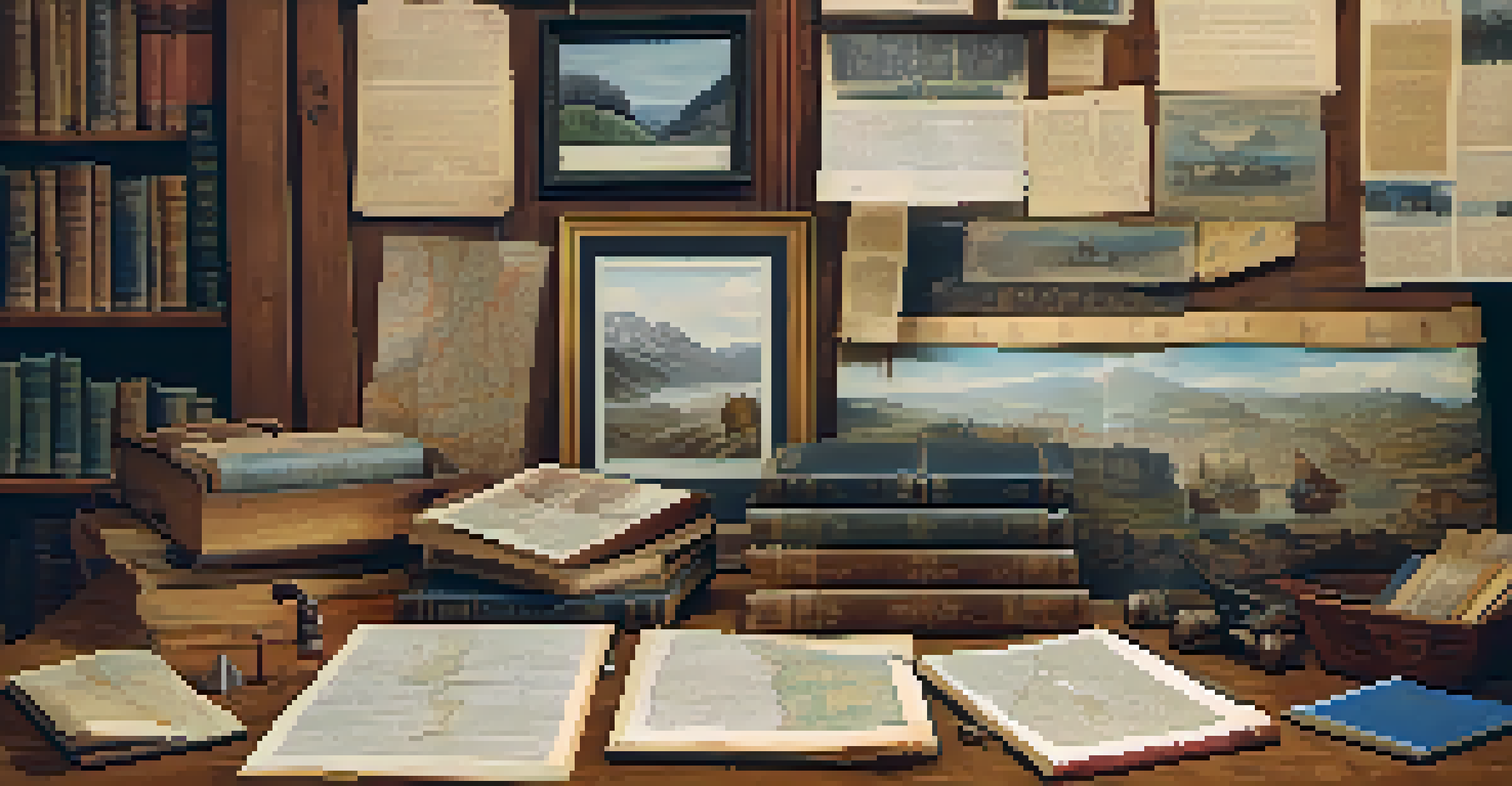Researching Primary Sources: A Guide for Historians

Understanding Primary Sources and Their Importance
Primary sources are original materials created during the time under study. They can be diaries, photographs, letters, or official documents. These sources provide firsthand accounts and evidence that are essential for historians to construct accurate narratives.
Primary sources are the raw materials of history; they are the evidence that historians use to reconstruct the past.
Unlike secondary sources, which analyze and interpret primary data, primary sources allow researchers to engage directly with the past. This direct connection can yield new insights and a deeper understanding of historical events, perspectives, and cultures.
For historians, utilizing primary sources is crucial as they help to validate interpretations and provide a solid foundation for arguments. They enrich the study of history by bringing voices from the past into contemporary discussions.
Finding Primary Sources: Tips and Strategies
Finding primary sources can sometimes feel like searching for a needle in a haystack. However, starting with archives, libraries, and online databases can greatly simplify the process. Many institutions have digitized collections, making it easier to access these invaluable resources from anywhere.

Utilizing search terms specific to your topic can help narrow down results. For example, if researching World War II, you might search for 'WWII letters' or 'personal accounts of soldiers.' This focused approach can lead you directly to relevant primary materials.
Importance of Primary Sources
Primary sources offer firsthand accounts that are essential for accurately understanding historical events.
Networking with other historians and joining academic communities can also be beneficial. Often, colleagues may have insights into lesser-known sources or repositories that could enrich your research.
Evaluating the Credibility of Primary Sources
Not all primary sources are created equal, which is why evaluating their credibility is essential. Consider the creator's background, purpose, and the context in which the source was produced. This analysis will help you understand the biases and limitations inherent in the material.
The past is not dead; it is not even past.
For instance, a diary entry might reveal personal feelings but could also be influenced by the writer's social status or experiences. Recognizing these factors can help you sift through the layers of meaning within the source.
Additionally, cross-referencing primary sources with other materials can validate your findings. By comparing different accounts, you can create a more nuanced and accurate depiction of historical events.
Analyzing Primary Sources: Key Techniques
Once you've gathered your primary sources, the next step is analysis. This involves close reading, looking for themes, and understanding the context in which the source was created. Techniques such as annotating texts or creating timelines can help organize your thoughts.
Consider asking questions like: What was the author's intent? Who was the intended audience? These inquiries guide your analysis and can reveal deeper meanings within the text.
Techniques for Source Analysis
Analyzing primary sources involves close reading and contextual understanding to reveal deeper meanings.
Engaging with secondary literature can also aid in contextualizing primary sources. Understanding existing scholarship will provide a framework for your analysis and highlight gaps that your research may fill.
Citing Primary Sources: Best Practices
Proper citation of primary sources is critical in academic work. It not only gives credit to the original creator but also allows others to locate the sources you used. Familiarize yourself with citation styles like APA, MLA, or Chicago, as each has specific guidelines for citing primary materials.
Include essential information such as the author, title, date of creation, and where the source can be found. For example, a citation for a letter might look like this: Author, First Name. "Title of Letter." Date of Letter. Archive or Collection Name.
Being meticulous in your citations not only improves the credibility of your work but also encourages others to engage with the original sources you found so valuable.
Ethical Considerations in Using Primary Sources
When using primary sources, ethical considerations come into play. It’s important to respect the rights of the creators and the context of the materials. This includes understanding issues related to copyright and ownership.
Additionally, being sensitive to the cultural and historical significance of certain materials is crucial. For example, oral histories from marginalized communities should be treated with care and respect, acknowledging the impact of historical trauma.
Ethics in Source Usage
Respecting the rights of creators and the cultural significance of materials is crucial when using primary sources.
Historians must strive to represent the voices of the past authentically and responsibly. This ethical approach ensures that your research honors the experiences and narratives of those who came before us.
The Future of Primary Source Research
As technology continues to evolve, the landscape of primary source research is changing rapidly. Digital archives and online repositories are becoming more common, facilitating access to previously hard-to-find materials. This shift opens up exciting possibilities for historians to explore diverse narratives.
Moreover, the rise of crowdsourced projects allows individuals to contribute their family histories and personal artifacts, enriching primary source collections. These community-driven efforts can uncover lost stories and broaden our understanding of history.

Looking ahead, historians must adapt to these changes while maintaining rigorous research standards. Embracing new technologies will enhance our ability to connect with the past and share its complexities with future generations.